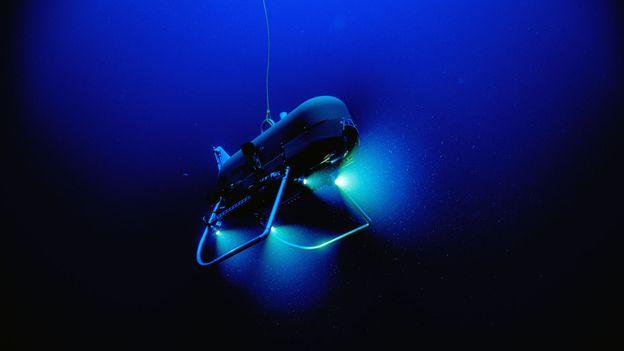Our oceans cover more than 70% of the Earth's surface, but over 80% of them remain unexplored. In fact, it is often claimed that we know more about the surface of Mars and the Moon than about the ocean floor on our own planet.
Nasa is on a mission to change that. The US space agency is exploring the deep ocean to search for clues of what oceans on other planets could look like, and push the limits of science and technology in one of the most extreme environments on our planet. It is a mission filled with wonder, danger and a not-insignificant risk of implosion.
The hope is that the underwater discoveries they make will help to unlock some of the mysteries in outer space while also test some of the equipment and experiments needed for missions elsewhere in the Solar System.

Earth's ocean depths are surprisingly similar to some of the conditions Nasa expects to find on other worlds in our Solar System. They could even provide clues about where scientists should be searching for alien life.
The deepest parts of Earth's oceans are known as the hadal zone. Named after Hades, the Greek god of the underworld, it is a forbidding place worthy of its name. Consisting of deep trenches and troughs, it extends 11km (6.8 miles) below the surface of the world's oceans. Cumulatively they account for an area of seabed equivalent to the size of Australia. Yet few vehicles can survive plunging into this dark abyss.
It is here that Nasa scientists, in partnership with the Woods Hole Oceanographic Institution (WHOI) in Massachusetts, are attempting to explore and probe the limits of life on Earth. Even the language the scientists use for their missions to this region shares terms with space exploration – in recent years marine biologists have sent multiple "landers" equipped with sensors and cameras to "crash-land" on the floor of the hadal zone, where they take measurements.









